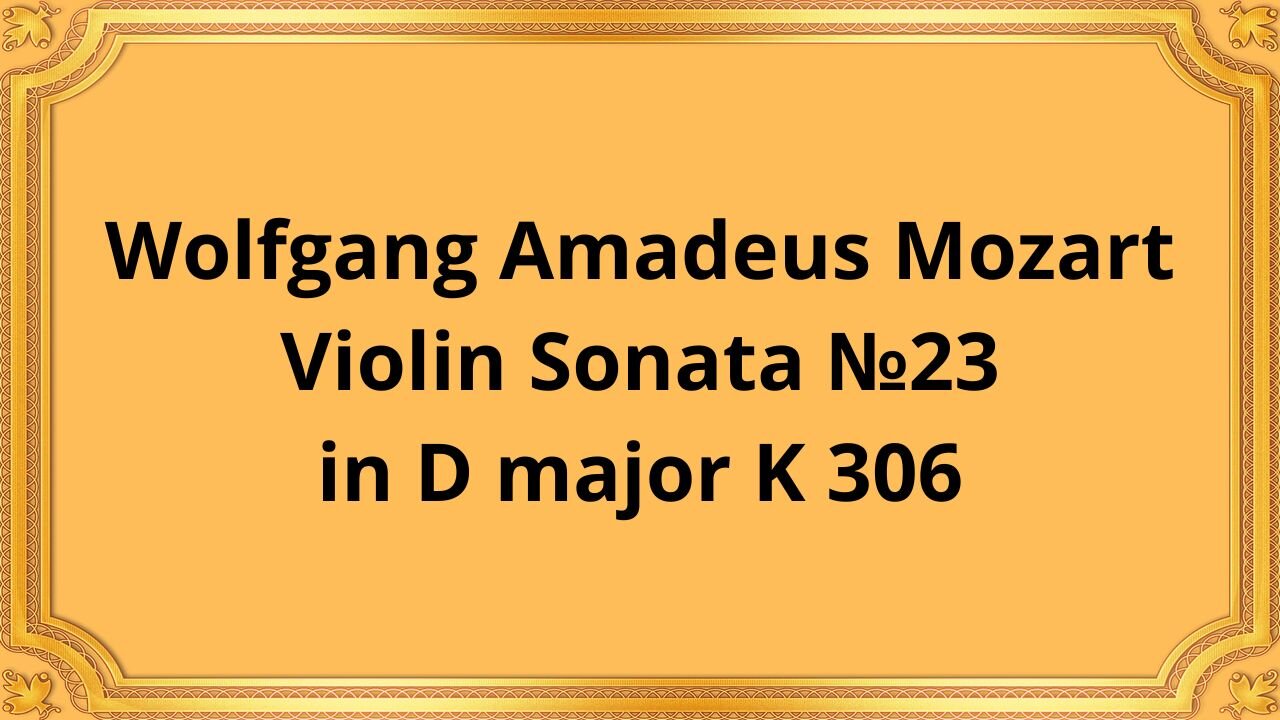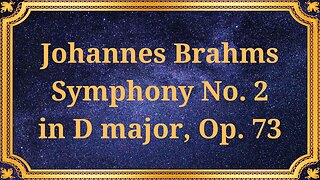Premium Only Content

Wolfgang Amadeus Mozart Violin Sonata №23 in D major K 306
#Mozart#Chamber_music#Classical_music#String_quintet#musical_composition
Publication date 1950
Carlo van Neste (violin)
Naum Sluszny (piano)
Wolfgang Amadeus Mozart's Violin Sonata No. 23 in D major K 306 is a masterpiece of classical music that has captured the hearts of audiences for centuries. It was composed in 1778 during Mozart's visit to Paris and features a delightful interplay between the violin and piano.
The sonata is divided into two movements: the Allegro con spirito and the Andantino cantabile. The first movement is characterized by its lively and joyful melody, which is introduced by the piano and later taken up by the violin. The second movement is more melancholic in nature, with a slower tempo and a more subdued melody.
One of the most notable aspects of the sonata is its technical demands on the performers. Both the violin and piano parts require a high level of technical skill and precision to execute properly. Mozart himself was an accomplished violinist, and he created the sonata to showcase his own virtuosity on the instrument.
Despite its technical demands, the sonata is also highly accessible to audiences. Its catchy melodies and joyful spirit make it a perennial favorite of classical music lovers. It has been performed and recorded by many of the world's top violinists and pianists, including Itzhak Perlman, Pinchas Zukerman, and Martha Argerich.
In terms of its historical significance, the sonata represents a transitional period in Mozart's career. It was composed during his travels throughout Europe, as he sought to establish himself as a professional musician. It also marks a shift away from the more ornate and complex style of music that was popular at the time, towards a more streamlined and accessible form of classical music.
Overall, Wolfgang Amadeus Mozart's Violin Sonata No. 23 in D major K 306 is a true gem of classical music. Its technical demands and joyful melodies make it a favorite of performers and audiences alike, while its historical significance marks it as an important milestone in the evolution of classical music. Whether you're a seasoned classical music aficionado or a newcomer to the genre, this sonata is sure to delight and inspire.
-
 36:10
36:10
Classical music_Music Inspiration
25 days agoJohannes Brahms Symphony No. 2 in D major, Op. 73
411 -
 LIVE
LIVE
Chicks On The Right
2 hours agoThe Trump Elon fight goes NUCLEAR, plus an important discovery about cat butts
1,752 watching -
 LIVE
LIVE
JULIE GREEN MINISTRIES
1 hour agoLIVE WITH JULIE
24,630 watching -
 LIVE
LIVE
The Bubba Army
22 hours agoElon DUMPS Trump - Bubba the Love Sponge® Show | 6/06/25
2,556 watching -
 1:20:07
1:20:07
Nick Freitas
15 hours agoTrump Vs Elon: What Is Actually Going On…
8.23K20 -
 14:28
14:28
Nicholas Bowling
21 hours ago $0.82 earnedCollege Students Debate Sabbath Day—Get Humbled By Jesus' Own Words
3.48K2 -
 LIVE
LIVE
BEK TV
23 hours agoTrent Loos in the Morning 6/6/2025
207 watching -
 LIVE
LIVE
Lofi Girl
2 years agoSynthwave Radio 🌌 - beats to chill/game to
1,093 watching -
 15:34
15:34
JohnADouglas
7 hours ago $0.40 earnedYOUTUBE NUKED MY CHANNEL!
5.63K8 -
 10:20
10:20
Nate The Lawyer
13 hours ago $2.71 earnedHow 30+ Witnesses Are Helping the Feds Nail Diddy for RICO | Lawyer Explains
17.3K2